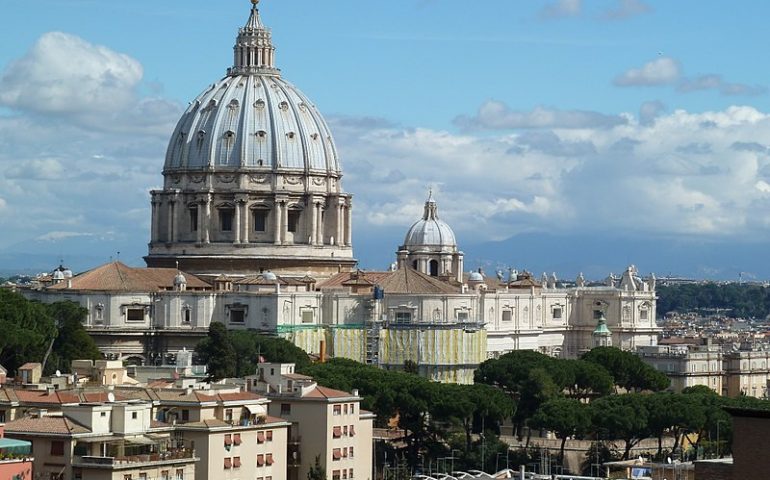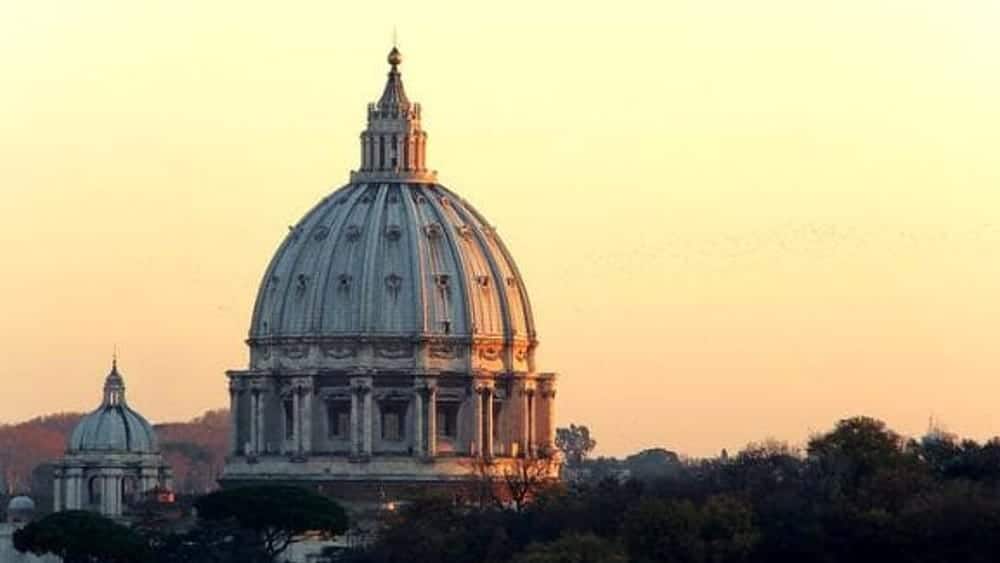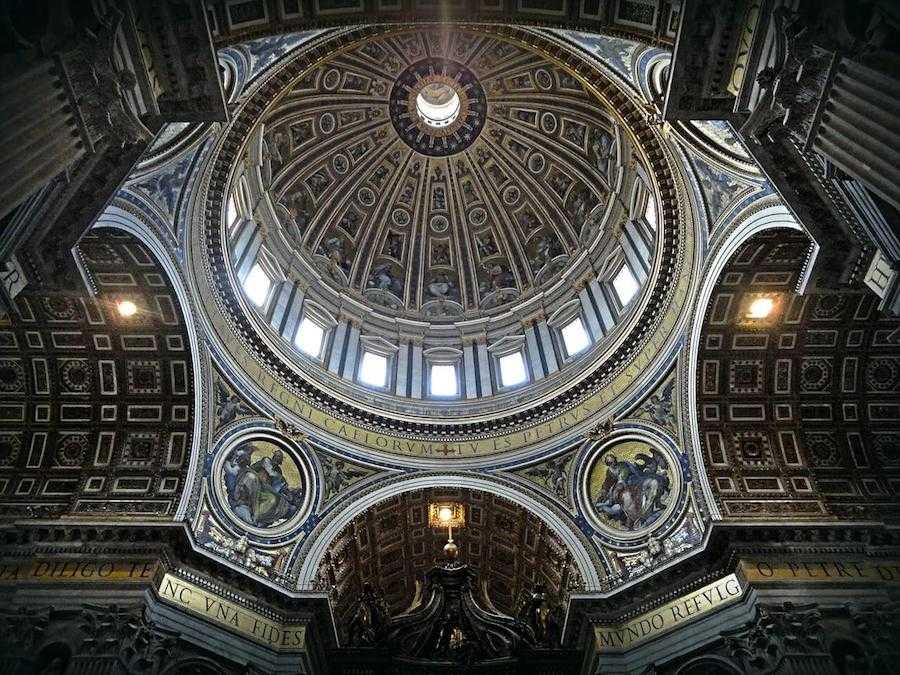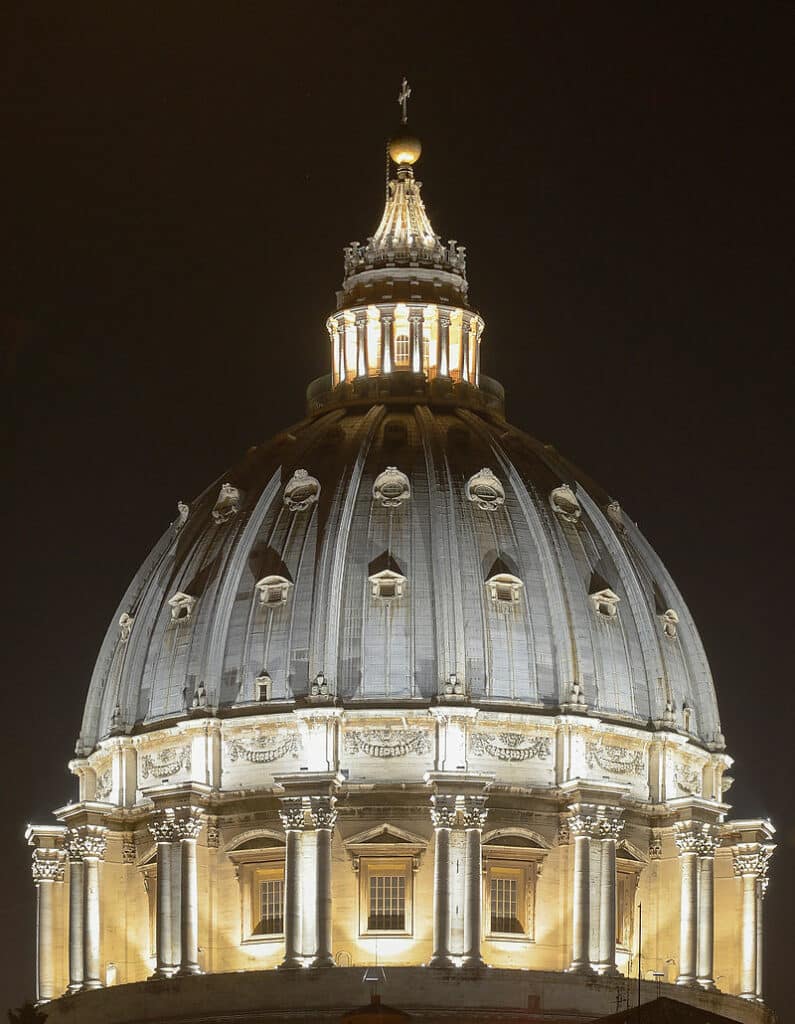St. Peter’s Dome made from a drawing by Michelangelo
Did you know? The Dome of St. Peter’s Square was made from a drawing by Michelangelo. The most famous “Er cupolone” in the world has dominated the skyline of the Roman panorama for centuries, surprising every time with its majesty. Without a doubt, the dome of St. Peter’s Square is one of the symbols of Rome.
It forms the cover of the cruise of St. Peter’s basilica in the Vatican. It is one of the largest masonry roofs ever built; it has an internal diameter of about 42 meters and brings the overall height of the basilica, from the base to the top of the lantern, to over 130 meters.
The dome of St. Peter’s is the symbol of the Vatican basilica. It stands at the intersection of the main nave with the transept, vertically above Bernini’s colossal Baldacchino and the access to Peter’s Tomb. The structure is supported by four colossal pillars.

Its shapes, an expression of the transition from Renaissance to Baroque architecture, largely reflect the design of Michelangelo Buonarroti, who worked on it until the year of his death in 1564.
It is one of the most panoramic points of the city, with a 360-degree view of the entire Vatican City and almost all the districts of the historic center of Rome.

At the beginning of the 16th century, Pope Julius II decreed the reconstruction of St. Peter’s Basilica in the Vatican, entrusting the project to the architect Donato Bramante.
The history of Michelangelo’s project is documented by a series of building site documents, letters, drawings by Buonarroti himself and other artists, frescoes and testimonies from contemporaries, such as Giorgio Vasari. A drawing preserved in Casa Buonarroti, prior to the years 1554-1555, is the first evidence of Michelangelo’s project for the drum of the dome.

The dome has a double cap structure: the internal cap, about 2 meters thick, has a load-bearing function, while the external one, covered in lead plates, is made to protect the first and has a thickness of about 1 meter.

The path that allows access to the summit winds between the two caps; a series of proto-Baroque dormer windows allows natural lighting of this gap. The lantern, which takes up the theme of the paired columns of the buttresses, is surmounted by a series of candlesticks and is closed, beyond the concave cusp, by a ball surmounted by a cross.
The ball, made of bronze but laminated in gold, has been accessible to visitors since the mid-twentieth century. During the last maintenance and polishing works (2005) the memory of the conclusion of the installation works was discovered, indicated by the date 1593 under the Latin signature of the architect Giacomo Della Porta.
Inside, in the circles of the four spandrels that support the dome, the four Evangelists are depicted, executed in mosaic on cartoons by Cesare Nebbia and Giovanni De Vecchi, the sides are decorated with angels by Cesare Roncalli. The words of Jesus to Peter taken from the Gospel according to Matthew are impressed in the band between the spandrels and the drum.

